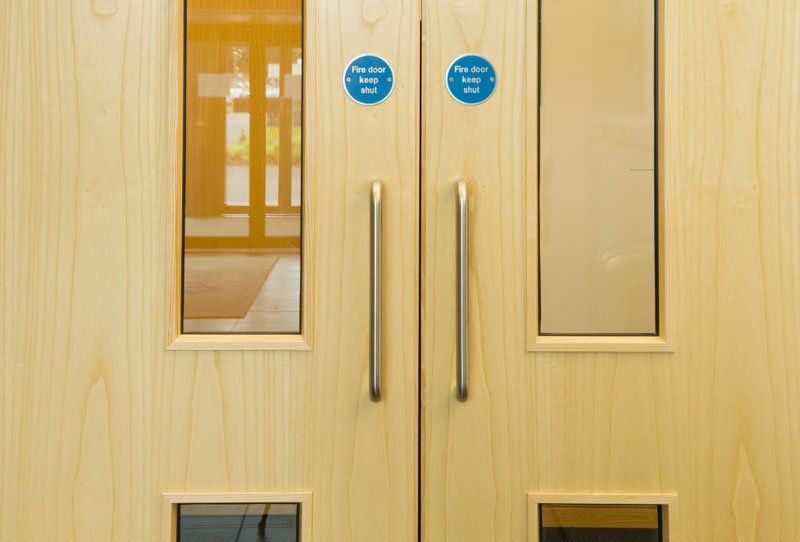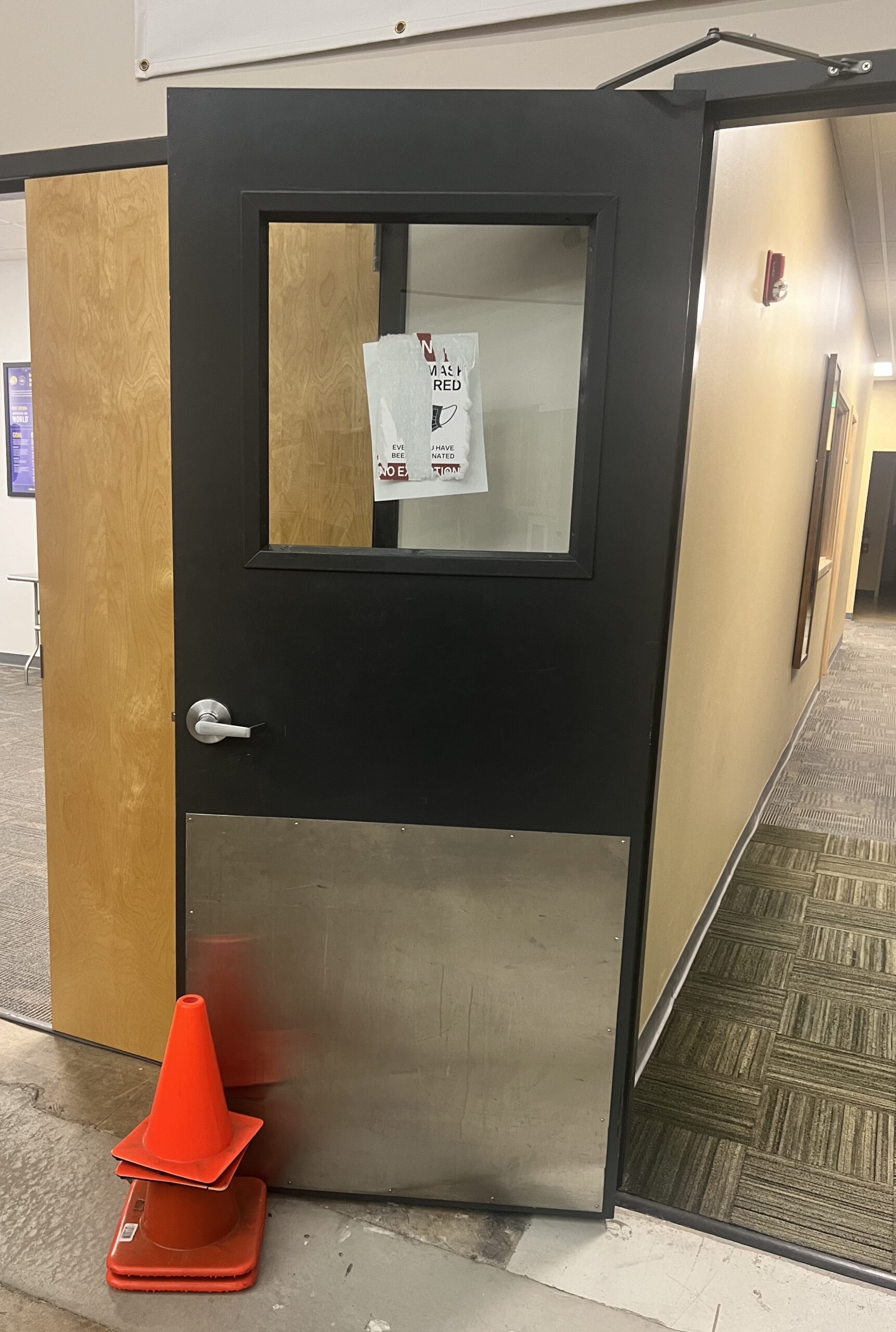How Fire Doors Can Aid Protect Against the Spread of Fire in Commercial Structures
How Fire Doors Can Aid Protect Against the Spread of Fire in Commercial Structures
Blog Article
Understanding the Different Kinds of Fire Doors for Enhanced Security
From standard fire-rated doors that protect against fires to acoustic fire doors that supply both fire resistance and sound insulation, each kind is developed with particular features in mind. The assimilation of glass fire doors and the need of fire leave doors better highlight the complex nature of fire door applications.
Requirement Fire-Rated Doors
Conventional fire-rated doors are an important element in making sure structure safety and security and conformity with fire policies. These doors are particularly designed to resist the spread of fire and smoke, giving vital protection to owners and building. Built from materials such as steel, plaster, and fire-resistant timber, they can endure heats and maintain structural stability for varying periods, commonly varying from 20 mins to 3 hours.
The efficiency of standard fire-rated doors is evaluated by their fire-resistance ranking, which is established with rigorous screening under controlled problems. This score shows the duration during which the door can consist of flames and warm, consequently permitting added time for emptying and emergency reaction. Furthermore, these doors usually include intumescent seals that broaden when revealed to warmth, further protecting against the passage of smoke and toxic gases.
Installation of conventional fire-rated doors need to adhere to strict building ordinance and requirements, such as those set by the National Fire Defense Association (NFPA) and the International Building Ordinance (IBC) Regular assessments and upkeep are important to ensure that these doors work appropriately in an emergency. Effectively installed and kept fire-rated doors are essential in improving total building security and minimizing fire-related dangers.
Smoke Doors
Smoke doors play a crucial role in fire security by especially resolving the containment of smoke, which is usually more hazardous than fires throughout a fire event. Smoke breathing can bring about severe respiratory system issues, disorientation, and even deaths, making smoke doors a crucial element in emergency situation preparation. These doors are designed to restrict the motion of smoke between different areas within a structure, therefore providing safer evacuation courses and lowering possible damages to building.

In addition, smoke doors are frequently geared up with automated closing mechanisms, activated by smoke alarm or fire alarms, to guarantee they close promptly during an emergency situation. By containing smoke, these doors help preserve reduced temperatures and more clear exposure in escape routes, making them a vital element in thorough fire security approaches. Their appropriate setup and maintenance are vital to make certain optimum efficiency when most required.
Acoustic Fire Doors
Acoustic fire doors give a twin feature in both fire safety and sound attenuation, making them a useful enhancement this hyperlink to structures where sound control is essential. These doors are engineered to not just fulfill extensive fire resistance criteria however also to substantially minimize sound transmission, thus improving general structure performance.
The building and construction of acoustic fire doors usually includes a combination of thick products and specialized seals. These elements collaborate to produce an efficient obstacle against both fire and noise. High-density cores, such as mineral boards or composite materials, are typically utilized in the door fallen leave to maximize audio insulation. In addition, the door framework and seals are made to preserve acoustic integrity while using robust fire resistance.
Acoustic fire doors are especially valuable in atmospheres where privacy and quiet are paramount, such as healthcare facilities, resorts, and instructional institutions. They assist to maintain a tranquil atmosphere by decreasing the transmission of sound between rooms or corridors while making certain compliance with fire safety and security guidelines. Along with their useful advantages, these doors can be customized to blend perfectly with the architectural aesthetics of a building, making certain that safety does not come with the cost of design.

Glass Fire Doors
Glass fire doors, frequently utilized in modern-day architectural designs, offer a blend of transparency and safety and security that traditional fire doors can not match. These doors combine the visual appeal of glass with vital fire-resistant properties, making them a perfect selection for modern structures. Engineered click here to find out more with specialized fire-resistant glazing, glass fire doors can hold up against heats and prevent the spread of fires and smoke for a defined period, usually varying from 30 to 120 minutes.
The building of glass fire doors includes several layers of toughened up glass, usually treated with intumescent products that broaden when subjected to warmth, additional boosting their fire-resistant capabilities. These doors are not only functional in terms of fire safety and security but likewise permit for all-natural light to penetrate via areas, adding to power performance and a much more inviting atmosphere.
In addition, glass fire doors can be incorporated with different framing materials such as steel or aluminum, which supply extra architectural support and durability. The use of such doors is particularly advantageous in commercial, instructional, and health care settings where visibility and safety are paramount. By satisfying rigid fire security laws and maintaining an open, modern aesthetic, glass fire doors stand for a pivotal innovation in fire-resistant building and construction.

Fire Exit Doors
Fire leave doors are an important part of any kind of building's safety infrastructure, designed to provide a swift and safe methods of egress during emergencies. These doors are purposefully located to make sure residents can swiftly and safely leave the premises in case of a fire or other hazardous circumstances. Unlike common doors, fire escape doors should follow strict regulative criteria, guaranteeing look at here now they can do accurately under pressure.
An essential feature of fire exit doors is their capacity to open up easily from the inside, normally geared up with panic bars or push pads. This style helps with fast evacuation and protects against bottlenecks that can happen throughout high-stress scenarios. Additionally, fire escape doors are commonly created from fireproof materials to stop the spread of fires and smoke, thereby giving vital additional time for discharge and firefighting initiatives.
An additional important element is the clear signage and illumination linked with fire leave doors. Eventually, the efficiency of fire leave doors is an essential aspect in securing lives and decreasing residential property damage during emergency situations.
Final Thought
In summary, comprehending the numerous kinds of fire doors, including conventional fire-rated doors, smoke doors, acoustic fire doors, glass fire doors, and fire departure doors, is necessary for improving safety and security in buildings. Each type supplies specific benefits, from fire and smoke control to appear insulation and aesthetic integration, making sure extensive protection. Fire doors. Routine maintenance and conformity with security requirements are important to guarantee their effectiveness in protecting residents and promoting secure discharge during emergencies
Report this page